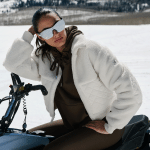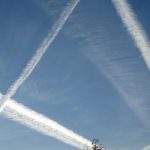[1.] Some places have recently enacted restrictions on wearing masks in public. They generally stem from three related rationales:
People’s wearing masks makes it harder for the police to identify who committed some crime: trespass, vandalism, assault, and more. That’s especially true when there are many people wearing the same masks, and a mask rock-thrower (for instance) can feel safe that it will be hard to identify him among the other mask-wearers. Because of this, wearing masks can embolden would-be criminals. And because of this, wearing masks can therefore be intimidating to bystanders, precisely because the bystanders will think that the mask-wearers might be willing to attack them with less risk of being caught and punished.
Of course, all places have laws that ban trespass, vandalism, assault, and similar crimes. But the premise of the mask laws is that those laws are insufficient, precisely because masking can help evade detection for people who violate those laws.
Such laws have existed for a long time. The 1871 federal Ku Klux Klan Act forbade (and still forbids) people, whether Klan members or not, “go[ing] in disguise on the highway or on the premises of another” “for the purpose of” depriving people of “the equal protection of the laws, or of equal privileges and immunities of the laws.” But later laws generally apply without a need for prosecutors to show a further prohibited purpose. Various laws enacted in 1900s, for instance, generally restrict mask-wearing (likewise historically usually motivated by the Klan’s behavior, but not limited to the Klan). See, e.g., the 1924 Louisiana law discussed in State v. Dunn (La. 1926), the 1951 Georgia law upheld in State v. Miller (Ga. 1990), and many other such laws.
Here is the most recent such law I’ve seen, just enacted by Nassau County (N.Y.) (I think this is the version that was finally enacted), though other recent ones are quite similar:
This Legislature finds that masks and facial coverings that are not worn for legitimate health and safety concerns or for religious or celebratory purposes are often used as a predicate to harassing, menacing or criminal behavior.
Therefore, the primary purpose of this law is to prohibit the wearing of masks or other facial covering in public unless such mask is worn for the purposes of protecting the wearer’s health or safety or for religious or celebratory purposes.
No person or persons over 16 years of age shall, while wearing any mask or facial covering whereby the face or voice is disguised with the intent to conceal the identity of the wearer, enter, or appear upon or within any sidewalk, walkway, alley, street, road, highway or other public right-of-way or public property or private property without the consent of the owner or tenant.
This law shall not apply to facial coverings worn to protect the health or safety of the wearer, for religious or cultural purposes, or for the peaceful celebration of a holiday or similar religious or cultural event for which masks or facial coverings are customarily worn.
For each exception to this law, a law enforcement officer may require a person or persons to remove the mask during traffic stops or when the officer has reasonable suspicion of criminal activity and/or intention to partake in criminal activity.
Any person that violates any provision of this law shall be guilty of a misdemeanor punishable by a fine of not more than one thousand dollars or imprisonment of not more than one year, or both.
But there are other examples as well.
[2.] These laws have been challenged on First Amendment grounds. One common argument is that banning masking can deter unpopular (but law-abiding) speakers from speaking out. The analogy would be to the Supreme Court’s holdings (e.g., McIntyre v. Ohio Elec. Comm’n (1995)) that the government generally may not require that speech (e.g., leaflets) include the speaker’s name: Such requirements, the Court held, may chill speech by people who worry about “economic or official retaliation” (lost jobs, targeting by government officials even after the demonstration) or “social ostracism.”
At the same time, while anonymity in writing may make it easier for people to get away with bad speech (rudeness, libel, fraud, threats), anonymity in one’s physical appearance makes it easier for people to get away with bad acts (vandalism, assault, robbery, murder). Such attempts to prevent harmful physical conduct might be seen as more justifiable than attempts targeted at harmful speech.
Another First Amendment objection to the laws is that wearing a mask is itself constitutionally protected symbolic expression, especially when the mask is emblematic of a group or a movement. Yet restrictions that incidentally interfere with symbolic expression are generally permissible (to oversimplify slightly) when they are unrelated to the suppression of that expressive message—for instance, if they are aimed at preventing crime, apprehending criminals, and preventing the menace that stems from fear of crime (entirely apart of the ideological character of the symbolic expression).
Perhaps because of these uncertainties, such laws have sometimes been upheld and sometimes struck down. For examples of cases upholding such laws, see Church of the American Knights of the KKK v. Kerik (2d Cir. 2004) and People v. Bull (N.Y. App. Term 2004) (involving “self-proclaimed anarchist[]” May Day demonstrators). (These suggest that the Nassau County law would likely be upheld, given that New York is in the Second Circuit.) For examples of cases striking down such laws, see American Knights of the KKK v. City of Goshen (N.D. Ind. 1999) and Ghafari v. Municipal Court (Cal. Ct. App. 1978). My sense is that more cases have upheld them than struck them down, but there are respectable numbers on both sides.
[3.] The matter becomes still more complicated when one considers exemptions from such laws.
[a.] The holiday celebration exception, for instance (common in such laws), seems to be justified by the content of expression: The government seems to take the view that wearing a Mardi Gras mask is especially valuable, and thus should be excluded. Likewise, the message of the mask might bear on whether it’s a holiday mask at all (e.g., if someone is wearing an Easter Bunny suit on Easter). Such content-based exceptions generally cause laws to be struck down (see, e.g., Carey v. Brown (1980)).
One response might be that masks worn as parts of holiday costumes are excluded not because they are valuable, but because they don’t implicate the interest in preventing fear: People may be afraid of someone walking in public wearing most kinds of masks, but not of someone walking in public wearing a Mardi Gras mask on Mardi Gras; the likely benign explanation for the mask will set people’s minds at ease.
But the other likely interests supporting the law—the interest in preventing crime and in facilitating the identification of criminals—are just as implicated regardless of why someone is wearing a mask. A court might therefore conclude that the holiday mask exception therefore isn’t sufficiently justifiable on content-neutral grounds, and instead flows from an improper preference for speech that conveys a certain kind of holiday-related message.
[b.] The religious exemption is also common in recent laws, and may indeed be mandated under constitutional or statutory (federal or state) rules providing for religious exemptions. And there’s reason for it: Some Muslim women feel religiously obligated or motivated to cover their faces in public with a niqab. Some married Hindu, Jain, and Sikh women likewise wear a veil call the ghoonghat (though at least some such veils are relatively sheer, and thus conceal the face less than opaque veils would).
But would the law with such an exemption have any practical value? Or would people who do want to commit crime also be willing to pretend to have religious motivations for wearing a mask? And if the exemption sufficiently undermines the rule, does that mean the rule as a whole may be unconstitutional?
To be sure, masks currently worn by protesters seem to look quite different from traditional religious veils. But if religious-looking masking is allowed, then presumably some protesters can shift to that. And beyond that, the design of religious veils is generally customary, and not fixed by religious law (at least in any way that police officers are likely to be able to identify). Would police officers be able to effectively sort, on the spot, people who have sincere religious objections from people who are just making up the objections in order to be free of the antimask law?
Religious veiling rules generally apply only to women, at least in the religious traditions with which we are familiar. But of course it may be impossible for police officers to reliably tell whether a person wearing a veil is a woman. And of course veil-wearing women can also commit crimes facilitated by the veils.
The Nassau County ordinance does note that police may require a person “to remove the mask … when the officer has reasonable suspicion of criminal activity and/or intention to partake in criminal activity.” Presumably that refers to reasonable suspicion of some criminal activity other than just the wearing of the mask (since otherwise the “reasonable suspicion” requirement would be redundant).
But, again, the premise of the law is that the police need extra tools besides the usual criminal laws barring trespass, vandalism, assault, and the like: If fifty people wearing similar-looking outfits with masks are at some demonstration, and one of them throws a rock—but the police don’t know who it is—then I doubt they’d have reasonable suspicion of rock-throwing by any particular mask-wearer. And I don’t think they’d be able to arrest all the mask-wearers for violating the mask-wearing law, given the exceptions, since they don’t know whether one of the exceptions applies.
Now perhaps “reasonable suspicion of criminal activity” means reasonable suspicion of criminal wearing of a mask in the absence of a suitable exception. But how is a police officer to reasonably decide whether the wearer is likely to be entitled to a religious exemption or not?
[c.] This is further complicated by the parallel exception for masks worn “for cultural purposes.” If this just refers to the practices of any group, then presumably KKK masks, keffiyehs worn to cover the face, and so on would be worn for cultural purposes: They are a cultural practice of certain subgroups of American whites or of Palestinians. But if those groups don’t count, because the “cultural purposes” have to be somehow more broadly shared by a larger culture, then what cultures qualify? And how would police officers be able to find that out?
[d.] Similar concerns may apply to masks worn to protect “health” as to masks worn for religious purposes. People still sometimes wear masks to diminish the risk of infection with COVID or other respiratory diseases—or just to filter smoggy air.
Again, most health-related masks look different from most of the masks that protesters wear. But if a law has an exemption (on its face or as enforced) for medical-looking masks, presumably many protesters might switch to those masks in order to take advantage of the exemption. So, here too, an exemption may practically swallow the rule.
In any event, I hope this helps show the complexity of the matter, and the difficulty of predicting whether courts will uphold these sorts of restrictions.
The post Are Laws Restricting Mask-Wearing in Public Constitutional? appeared first on Reason.com.






